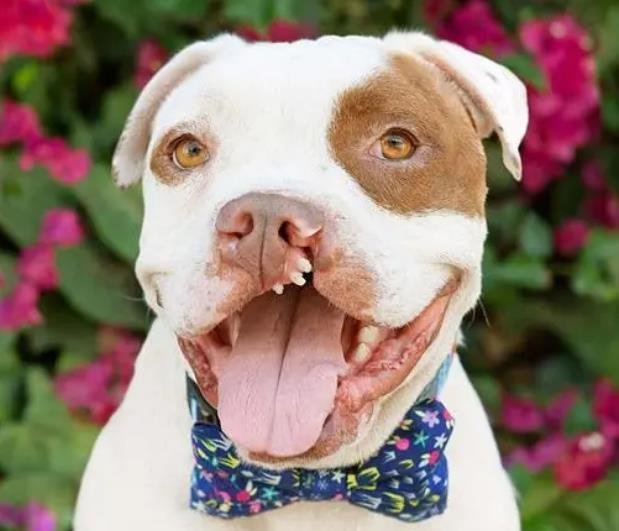
How to Save a Newborn Puppy with a Cleft Palate
Understanding Cleft Sense of taste in Infant Puppies
A cleft sense of taste could be a innate imperfection that happens when the roof of a puppy’s mouth doesn’t appropriately near amid advancement. This may cause troubles in nourishing and breathing, making it a genuine condition that requires immediate consideration. Recognizing and understanding the side effects of a cleft sense of taste is the primary step in guaranteeing your infant puppy gets the care it needs.
Quick Steps for Care
Once a cleft sense of taste is recognized, the primary and most crucial step is to guarantee the puppy is able to nourish. Conventional nursing may not be conceivable, so you might got to utilize a specialized bolstering bottle or syringe. Your veterinarian can suggest the finest strategy and give direction on appropriate nourishing procedures to maintain a strategic distance from yearning pneumonia, which may be a common hazard for puppies with this condition.
Long-Term Solutions and Veterinary Care
Whereas prompt care centers on bolstering and sustenance, long-term arrangements regularly include surgical mediation. Counsel with a veterinary pro who can assess the seriousness of the cleft sense of taste and examine surgical choices. Surgery is ordinarily performed when the puppy may be a bit more seasoned and more grounded, as a rule around three to four months of age. Post-surgery care is significant to ensure successful recovery and in general wellbeing.
Bolster and Observing
In expansion to therapeutic care, giving a supportive environment is fundamental. Screen your puppy closely for signs of trouble or trouble. Standard veterinary check-ups are crucial to track the puppy’s advance and address any complications early on. With appropriate care and consideration, numerous puppies with cleft palates can go on to lead sound, cheerful lives.
American Dingo animal behavior Budget Tips canine behavior Canine Care Canine Health DIY pet projects dog behavior Dog Breeds dog care Dog Care Tips dog exercise Dog Food Dog Grooming dog health Dog Measurement dog nutrition dog ownership dog potty area Dog Training Dog Wound Care Family Pets Hunting Dogs lipomas in dogs newborn puppy care obedience training outdoor pet care Pet Care Pet Care Tips Pet Health Pet Loss Pet Safety pet tips pet training Positive Reinforcement Potty Training Puppy Care puppy health Puppy Training Rabies in Dogs Temperature Monitoring Training Tips veterinary advice Veterinary Care Veterinary Tips
-
 Essential Care Guide: Pet dogs Wellness Checks Every Owner Needs
2 views
Essential Care Guide: Pet dogs Wellness Checks Every Owner Needs
2 views -
 Understanding Exercise Needs for Different Dog Breeds
2 views
Understanding Exercise Needs for Different Dog Breeds
2 views -
 2025 Mice-Proof Dog Food Storage: 3 Expert Tips to Block Rodents (+ Garage Storage Hacks)
2 views
2025 Mice-Proof Dog Food Storage: 3 Expert Tips to Block Rodents (+ Garage Storage Hacks)
2 views -
 How to Successfully Potty Train Your Dog in Singapore
1 view
How to Successfully Potty Train Your Dog in Singapore
1 view -
 How to Teach Your Puppy to Sit: A Step-by-Step Guide
1 view
How to Teach Your Puppy to Sit: A Step-by-Step Guide
1 view -
 The Ideal Age to Start Potty Training Your Dog
1 view
The Ideal Age to Start Potty Training Your Dog
1 view -
 Top 10 Famous Dogs in the World The Three Stooges of Sledding and Housebreaking Make the List
1 view
Top 10 Famous Dogs in the World The Three Stooges of Sledding and Housebreaking Make the List
1 view -
 Pitbull Allergies: 7 Vet-Approved Signs, Treatments & How to Protect Your Dog (2025 Guide)
1 view
Pitbull Allergies: 7 Vet-Approved Signs, Treatments & How to Protect Your Dog (2025 Guide)
1 view -
 Mastering the Art of Training a 2-Year-Old Dog: Tips and Tricks
1 view
Mastering the Art of Training a 2-Year-Old Dog: Tips and Tricks
1 view -
 2025 Dog Labor Guide: 4 Vet-Approved Steps for Safe Home Delivery (Emergency Protocols Inside)
1 view
2025 Dog Labor Guide: 4 Vet-Approved Steps for Safe Home Delivery (Emergency Protocols Inside)
1 view










Leave a Reply
You must be logged in to post a comment.